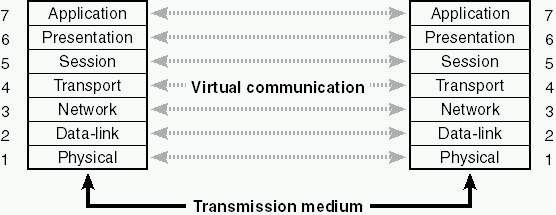|
|
Introduction to OSI:
Open Systems Interconnection (OSI) reference model is a model that
standardize and integrate the networking software that is essential
for sending messages between machines.The model defines the seven layers
of software that is introduced below
|

|
Application layer: Handles information transfer between two network
applications, including functions such as security checks,
identification of the participating machines, and initiation of
the data exchange.
Presentation layer: Handles data formatting, including issues
such as whether lines end in carriage return/line feed
(CR/LF) or just carriage return (CR), whether data is to
be compressed or encoded, and so forth.
Session layer: Manages the connection between cooperating
applications, including high-level synchronization and
monitoring of which application is "talking" and which
is "listening."
Transport layer: On the client, this layer divides messages into
packets and assigns them sequence numbers to ensure that
they are all received in the proper order. On the
destination, it assembles packets that have been received.
It also shields the session layer from the effects of
changes in hardware.
Network layer: Creates packet headers and handles routing,
congestion control, and internetworking. It is the highest
layer that understands the network's topology, that is,
the physical configuration of the machines in the network,
any limitations in bandwidth, and so on.
Data-link layer: Transmits low-level data frames,
waits for acknowledgment that they were received,
and retransmits frames that were lost over unreliable
lines.
Physical layer: Passes bits to the network cable or
other physical transmission medium.
|
|
|
|






